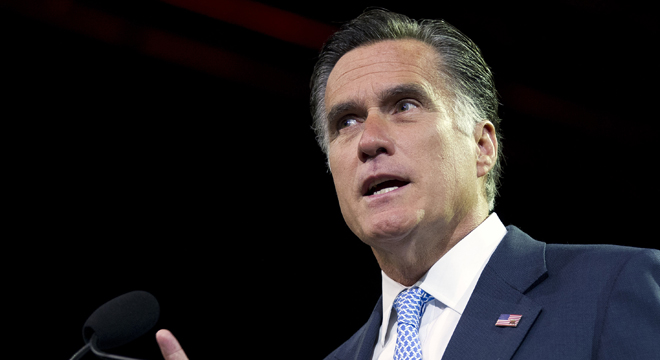At the final presidential debate Monday night, Mitt Romney obscured his early opposition to providing taxpayer funds to rescue the auto industry before it went through a private bankruptcy process.
“I would do nothing to hurt the U.S. auto industry. My plan to get the industry on its feet when it was in real trouble was not to start writing checks,” he said. “I said they need — these companies need to go through a managed bankruptcy, and in that process they can get government help and government guarantees, but they need to go through bankruptcy to get rid of excess cost and the debt burden that they’d built up. … I said that we would provide guarantees and that was what was able to allow these companies to go through bankruptcy, to come out of bankruptcy.”
“The idea that has been suggested that I would liquidate the industry — of course not,” the GOP candidate said. “That’s the height of silliness.”
In fact, Romney had advocated against using the government to bail out Ford, General Motors and Chrysler, instead pushing for the auto companies to first undergo a managed bankruptcy, restructure their operations, and revive themselves with funds from the private sector. On Nov. 18, 2008, he wrote a op-ed in the New York Times famously titled, “Let Detroit Go Bankrupt,” arguing that government assistance should only come after the auto makers go through bankruptcy on their own.
“If General Motors, Ford and Chrysler get the bailout that their chief executives asked for yesterday, you can kiss the American automotive industry goodbye,” Romney wrote. “It won’t go overnight, but its demise will be virtually guaranteed.”
At the time, the financial markets were in free-fall and credit was frozen. It was all but inconceivable that the critically wounded industry could have procured the funds to avoid liquidation if the government had not stepped in. As a result, President Bush issued a short-term rescue plan late in 2008 and President Obama extended it in the spring of 2009, extracting concessions from auto makers and shareholders to keep the companies afloat.
Late in 2011, while fighting for the Republican nomination, Romney stuck to his guns that the auto bailout as structured was the wrong way to go.
“My view with regards to the bailout was that whether it was by President Bush or by President Obama, it was the wrong way to go. I said from the very beginning they should go through a managed bankruptcy process, a private bankruptcy process. We have capital markets and bankruptcy, it works in the U.S.,” he said. “My plan, we would have had a private sector bailout with the private sector restructuring and bankruptcy with the private sector guiding the direction as opposed to what we had with government playing its heavy hand.”
But from the start, Romney did, however, advocate for federal financing but only after the auto companies emerged from bankruptcy, a dicey proposition without a government bailout.
“The federal government should provide guarantees for post-bankruptcy financing and assure car buyers that their warranties are not at risk,” he wrote in the Times op-ed.
At the Boca Raton, Fla. debate Monday night, Obama accused Romney of trying to “airbrush history,” in an apparent effort to sway voters in manufacturing-heavy states, most notably Ohio, against his opponent.
“I’ve made a different bet on American workers,” the president said. “You know, if we had taken your advice, Governor Romney, about our auto industry, we’d be buying cars from China instead of selling cars to China.”






